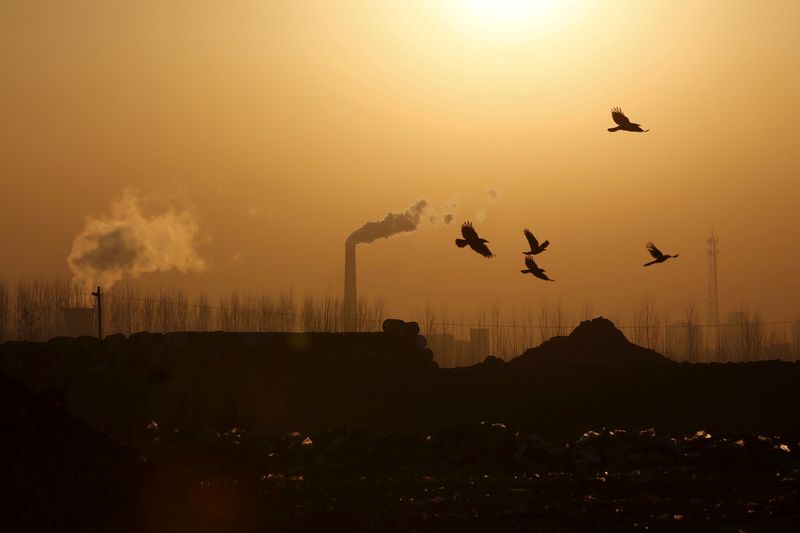China’s industrial profits rebound in June on easing COVID curbs
2022.07.27 06:17
2/2

FILE PHOTO: Birds fly over a closed steel factory where chimneys of another working factory are seen in background, in Tangshan, Hebei province, China, February 27, 2016. REUTERS/Kim Kyung-Hoon/File Photo/File Photo
2/2
BEIJING (Reuters) -Profits at China’s industrial firms bounced back to growth in June, bolstered by the resumption of activity in major manufacturing hubs, but worries about a COVID-19 resurgence have cast a shadow over future factory output.
Profits in June grew 0.8% from a year earlier, rebounding from a 6.5% decline in May, according to data released by the National Bureau of Statistics (NBS) on Wednesday.
Buoyed by easing pandemic curbs and government stimulus, June’s data shows industrial firms are gradually coming back from painful supply chain disruptions in the second quarter.
As the pandemic was effectively controlled and the industrial chain further recovered, industrial firms’ efficiency improved markedly, NBS Senior Statistician Zhu Hong said in a statement.
China’s economy braked sharply in the April-June quarter, highlighting the colossal toll on activity from widespread lockdowns that hit domestic consumption and business confidence.
Industrial firms saw their combined profits rise 1% to 4.27 trillion yuan ($631.1 billion) in January-June from the same period a year earlier. That matched the 1.0% growth pace in the first five months, the data showed.
Liabilities at industrial firms jumped 10.5% at end-June, also remaining the same as the 10.5% growth as of end-May.
In June, China’s industrial output grew 3.9% from a year earlier, while factory-gate inflation hit a 15-month low as the country continues to buck the global trend of accelerating prices.
Factory activity in the Shanghai region has gradually recovered from a two-month citywide COVID-19 lockdown. Tesla (NASDAQ:TSLA) achieved its highest monthly output at its Shanghai plant in June since it opened in 2019.
However, risks of a COVID resurgence and the return of strict measures to stamp out infections across the country pose challenges to factory production and recovery in the world’s second-largest economy.
The Chinese tech hub of Shenzhen told 100 major companies including iPhone maker Foxconn to set up “closed-loop” systems as it battles COVID-19, according to a document attributed to the local government on Monday.
Earlier this month, the port city of Tianjin, home to factories linked to Boeing (NYSE:BA) and Volkswagen (ETR:VOWG_p), as well as Lanzhou city of Gansu province and coastal city of Beihai in Guangxi tightened COVID restrictions to fight new outbreaks.
Meanwhile, policymakers are scrambling to avert other problems such as a debt crisis in the property sector from spilling into the broader economy in a politically sensitive year.
The official growth target of around 5.5% for this year will be hard to achieve without doing away with Beijing’s strict zero-COVID strategy, analysts say. A Reuters poll has forecast 2022 growth will slow to 4%.
China gross domestic product in the second quarter grew a tepid 0.4% from a year earlier – the weakest showing since a 6.9% contraction in the first quarter of 2020 due to the initial COVID shock.
The industrial profit data covers large firms with annual revenues of over 20 million yuan from their main operations.
($1 = 6.7662 Chinese yuan)








